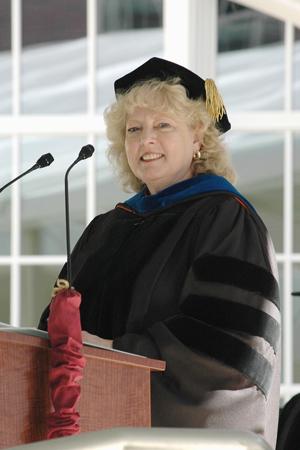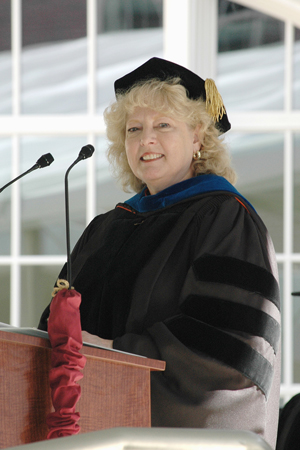She wrote the book on new medical schools


Myra Hurt was working on the front lines of the push to create the first new medical school in the United States in nearly a quarter-century. As director of the Program in Medical Sciences (1992-2000), she knew all too well that a full, four-year program was necessary to achieve the mission of producing more of the kinds of doctors Florida needs most.
In 1993, she wrote a vision paper regarding the expansion of PIMS into a four-year M.D. program.
Not only did Hurt help to win support for a new medical school at Florida State, but she was a primary force in establishing community-based medical education as the College of Medicine’s raison d’etre.
“The time is right to launch a new approach to teaching physicians how to practice patient-centered medicine,” Hurt said in announcing the Legislature’s approval of the new medical school in the spring of 2000.
She was named acting dean shortly thereafter, a role she held for nearly a year.
Now, 27 years after arriving at Florida State as a visiting professor of chemistry, Hurt has decided to make a transition. She is retiring as senior associate dean for research and graduate programs, taking a one-year sabbatical to write a book. She’ll join co-authors Durell Peaden and Sandy D’Alemberte in describing the often turbulent process of creating a brand-new medical school with a model meant to turn the traditional approach to medical education on its head.
Peaden is the former Florida House member (later senator) and rural community physician who made the first legislative push for a new medical school at Florida State. D’Alemberte was FSU’s president at the time the medical school was created, in addition to being an accomplished trial attorney. His legal acumen played a pivotal role in overcoming opposition from the Association of American Medical Colleges and the American Medical Association.
Together, Hurt, Peaden and D’Alemberte were determined not to let the push for a new medical school stall.
Not only did the school successfully admit its first class in May 2001, but the AAMC did an about-face five years later, calling for a 30-percent increase in medical school enrollment to address the physician shortage that Hurt, Peaden and D’Alemberte had predicted. In the wake of that philosophical change by the AAMC, a wave of new medical schools has opened in the U.S., with more in the planning stages.
“I look forward to this opportunity with great enjoyment,” Hurt said of her pending sabbatical. “As always, I remain committed to the development of our college, our community partnerships, the Clinical Research Network and our important relationship with the Clinical Translational Science Institute at the University of Florida.”
Upon completion of the much-anticipated book in 2015, Hurt will resume serving as a faculty member and researcher. Her office will move from the administrative suite at the main campus to the research building.
“This is a bittersweet moment for me,” said College of Medicine Dean John P. Fogarty. “The person that I often refer to as the architect of the FSU College of Medicine has come to the decision that it’s time to retire from her administrative duties.
“So this month we will begin the very difficult job of replacing a legend.”
A search committee and national search firm will assist in finding a replacement for Hurt.
Replacing her degree of experience may not be possible.
As PIMS director, Hurt recognized the need for building a pipeline to medical school for students from backgrounds that are underrepresented both in medical school and in the physician workforce. Minority students, including those from rural and urban communities, have benefited from outreach programs developed through Hurt’s vision of how to diversify enrollment.
She also led the creation of the medical school’s Ph.D. program in biomedical sciences and the Honors Medical Scholars program. “Her work has allowed her the opportunity to teach hundreds of undergraduate and graduate students both in the classroom and in the laboratory and to watch them grow up to become local practicing physicians, other health professionals or researchers,” Fogarty said.
“Some of these former undergraduates and medical students have even served as her physician.”

